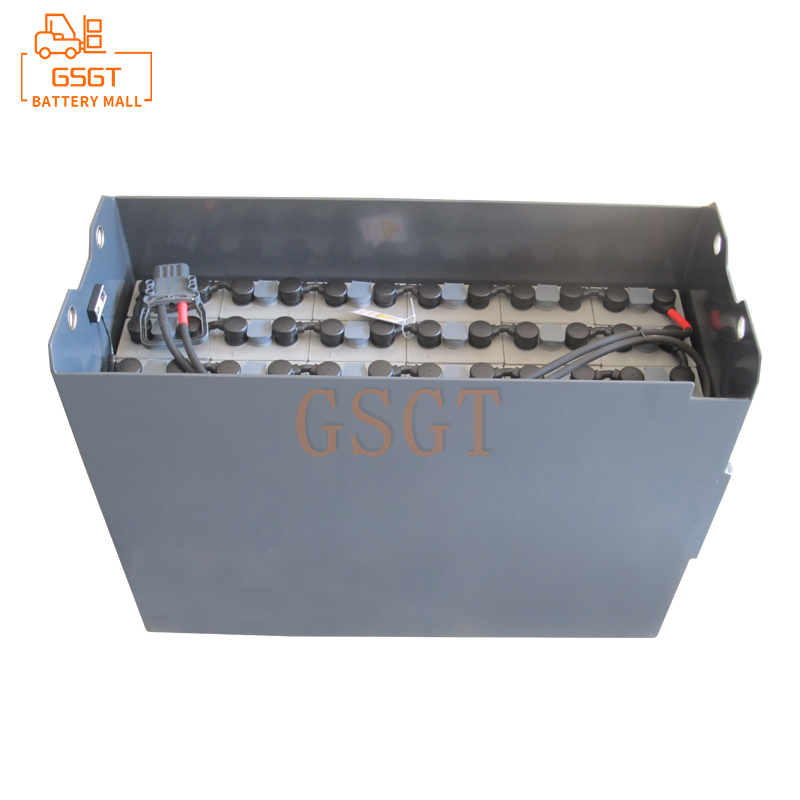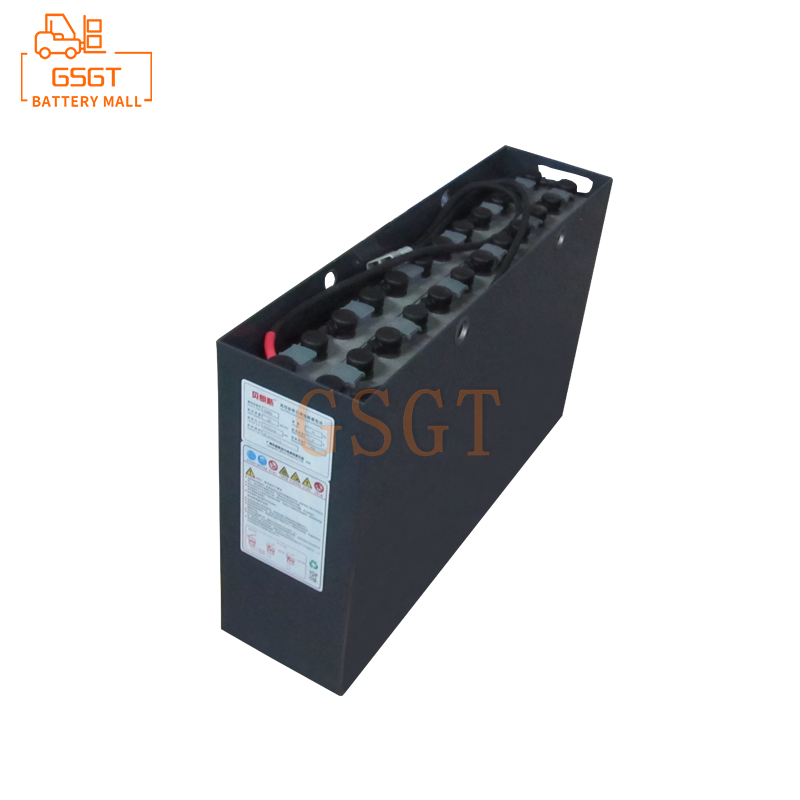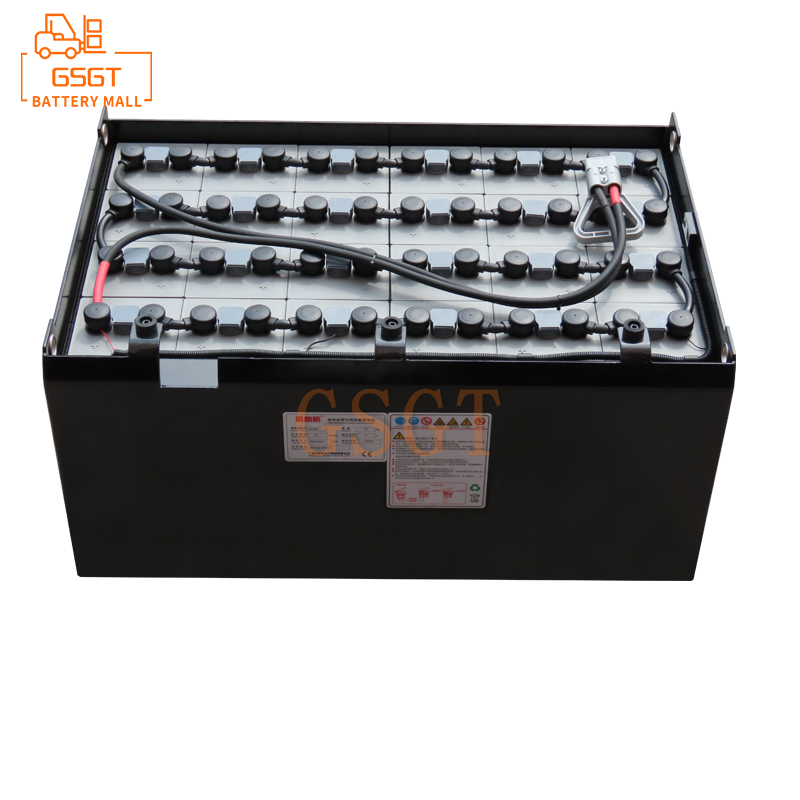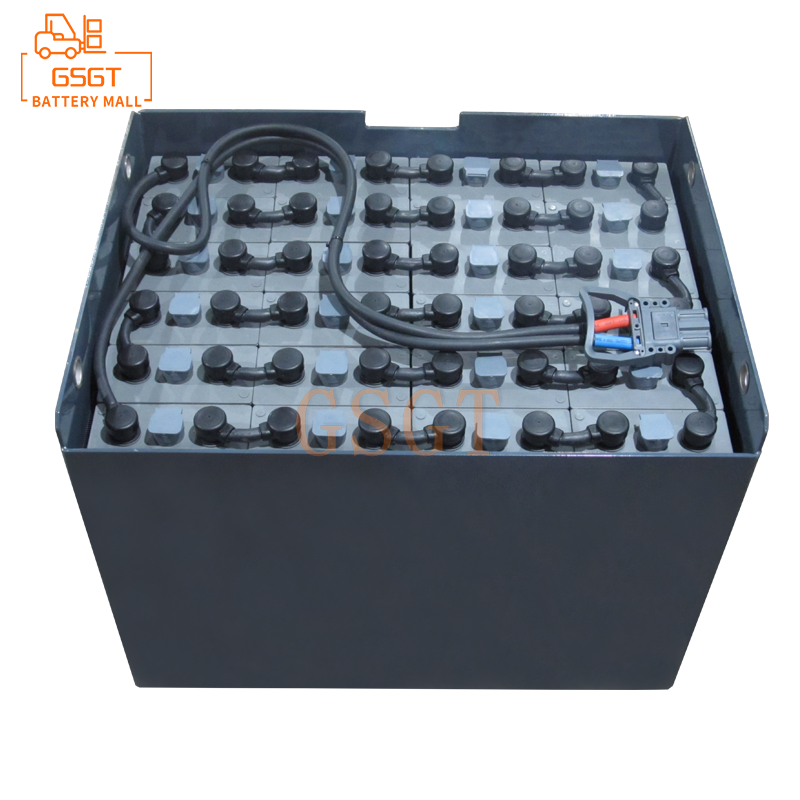Time:2025-06-09 09:50:08
Browse:612
In the field of industrial logistics, forklifts, as key handling equipment, the selection of their power sources is of vital importance. Lead-acid batteries have become the preferred power source for many forklifts due to their advantages such as low cost, mature technology, and excellent high-rate discharge performance. However, there are numerous models of lead-acid batteries on the market. How to accurately select the model suitable for forklifts has become a focus of concern for many users. Choosing the right model of lead-acid battery for forklifts not only ensures the efficient operation of forklifts but also reduces operating costs and extends the service life of the equipment. Next, we will delve into the key points in the selection process.
Overview of the Working Principle and Types of Lead-Acid Batteries
The operation of lead-acid batteries is based on the reversible chemical reaction between lead and its oxides and the sulfuric acid electrolyte. During the charging process, electrical energy is converted into chemical energy and stored. The lead sulfate on the positive plate is oxidized to lead dioxide, and the lead sulfate on the negative plate is reduced to lead. When discharging, the opposite occurs. Chemical energy is converted into electrical energy to provide power for the forklift, and lead sulfate is formed on both the positive and negative plates.
The common lead-acid batteries used in forklifts mainly include ordinary lead-acid batteries. Ordinary lead-acid batteries are affordable, but they require regular checks of the electrolyte level and the addition of distilled water, and maintenance is relatively frequent.
The influence of forklift types and working environments on battery selection
Different types of forklifts, such as counterbalanced forklifts, electric pallet trucks, and reach trucks, have significantly different working characteristics and battery requirements. Counterbalanced forklifts are typically used for heavy-load handling and require batteries with high capacity and large current discharge capabilities to meet the demands of frequent lifting and long-distance driving. Electric pallet trucks are generally used for short-distance operations in indoor environments such as warehouses. They have relatively low requirements for battery capacity, but they need to be compact in size to facilitate installation in the confined space of the vehicle body. The reach truck, on the other hand, caters to both indoor storage and a certain degree of heavy-load handling, requiring a good balance between battery capacity and size.
The working environment is also an important factor influencing battery selection. In high-temperature environments, the chemical reaction rate of batteries increases and the evaporation of the electrolyte intensifies. Therefore, it is necessary to choose batteries with good high-temperature resistance and high electrolyte stability, while also considering the heat dissipation issue of the batteries. Low-temperature environments can reduce the capacity of batteries and increase their internal resistance. At this time, batteries with good low-temperature performance and the ability to maintain a high discharge efficiency at low temperatures should be selected, and it may be necessary to be equipped with a battery heating device. If the forklift operates in an environment with a lot of dust, humidity or corrosive gases, a battery with good sealing performance, anti-corrosion casing and plates should be selected to prevent damage to the internal components of the battery and extend its service life.
Considerations of key performance parameters in selection
Voltage matching: The design voltage of forklift motors is specific, and common ones include 24V, 36V, 48V, 80V, etc. The battery voltage must be strictly matched with the rated voltage of the forklift motor. If the battery voltage is too low, the motor cannot output sufficient power, resulting in insufficient power for the forklift, slow lifting speed, weak driving force, and even inability to work normally. If the voltage is too high, it will cause excessive current in the motor, resulting in severe heating, which may burn out the motor and other electrical components. At the same time, it will also accelerate the aging and damage of the battery itself. Therefore, when selecting a model, it is essential to carefully review the technical manual of the forklift to determine the required rated voltage and choose a lead-acid battery that is exactly the same as it.
Capacity determination: Battery capacity is directly related to the working hours and endurance of forklifts. Determining the appropriate battery capacity requires a comprehensive consideration of the working intensity and operation time of the forklift. Generally speaking, the required battery capacity can be determined by estimating the total power consumption of the forklift within one working cycle. For forklifts with high work intensity and long operation hours, high-capacity batteries should be given priority. For forklifts that operate intermittently or for short periods of time, the battery capacity requirement can be appropriately reduced, but it is also necessary to ensure that their peak power demand is met.
Depth of discharge and cycle life: Depth of discharge refers to the percentage of electricity discharged by a battery in one discharge process to its rated capacity. The cycle life of lead-acid batteries is closely related to the depth of discharge. The deeper the discharge depth, the shorter the cycle life. If the usage scenarios of forklifts often lead to excessive battery discharge, such as continuous operation for long periods without timely charging, then batteries with long cycle life and the ability to withstand deep discharge should be selected to reduce the frequency and cost of battery replacement. At the same time, reasonably controlling the usage habits of forklifts and avoiding excessive discharge can also effectively extend the battery life.
Size and weight matching: The size of lead-acid batteries must precisely match the battery installation space of the forklift. The size is too large to be installed. If the size is too small, the battery may shake during vehicle operation, affecting its stability and even damaging the battery. In addition, the weight of the battery should not be overlooked. An overly heavy battery may affect the overall balance and handling performance of the forklift, especially for some indoor forklifts that have strict requirements for the vehicle's own weight. When selecting a model, it is necessary to choose a battery of the appropriate size and weight based on the size of the forklift battery compartment and the load capacity limit, ensuring a firm installation that does not affect the normal operation of the forklift.
Summary of selection steps and suggestions
Clarify the parameters of the forklift: Carefully review the product manual of the forklift and record key parameters such as the model of the forklift, rated voltage, current requirements, battery compartment size, and the recommended battery weight range. These parameters are the fundamental basis for the subsequent selection of lead-acid batteries.
Evaluate the working scenario: Analyze the actual working environment of the forklift, including temperature, humidity, dust concentration, corrosive gases and other conditions, as well as the working intensity and operation time. Based on the characteristics of the working scenario, determine the special requirements for battery performance, such as high temperature resistance, low temperature resistance, corrosion resistance, and high capacity, etc.
Screen battery models: Based on the parameters of the forklift and the requirements of the working scenario, screen the lead-acid battery models that meet the conditions in the market. Pay close attention to the performance indicators of the battery such as voltage, capacity, size, weight, depth of discharge and cycle life, and ensure that all indicators are precisely matched with the requirements of the forklift.
Consult professionals: If there are any doubts or uncertainties during the selection process, it is recommended to consult the forklift manufacturer, battery dealer or professional technicians. They have rich experience and professional knowledge, and are capable of providing targeted suggestions and solutions based on the actual situation.
Comprehensive comparative decision-making: Taking into account multiple factors such as battery performance, price, brand, and after-sales service, a thorough comparison of different battery models is made. Under the premise of meeting the usage requirements of forklifts, select the lead-acid battery model with the best cost performance to achieve the best investment return.
Selecting the right model of lead-acid battery for forklifts is a systematic and meticulous task that requires a comprehensive consideration of multiple factors. By thoroughly understanding the working principle and type characteristics of lead-acid batteries, fully analyzing the type, working environment and key performance parameter requirements of forklifts, taking into account brand and quality considerations, and following scientific selection steps, users can select the most suitable lead-acid battery for forklifts, providing reliable power support for the efficient and stable operation of forklifts, and improving the logistics handling efficiency of enterprises. Reduce operating costs.

$2040

$1060

$2180

$3070

MESSAGE
Professional And Efficient
Security
Affordable Price
Professional Services